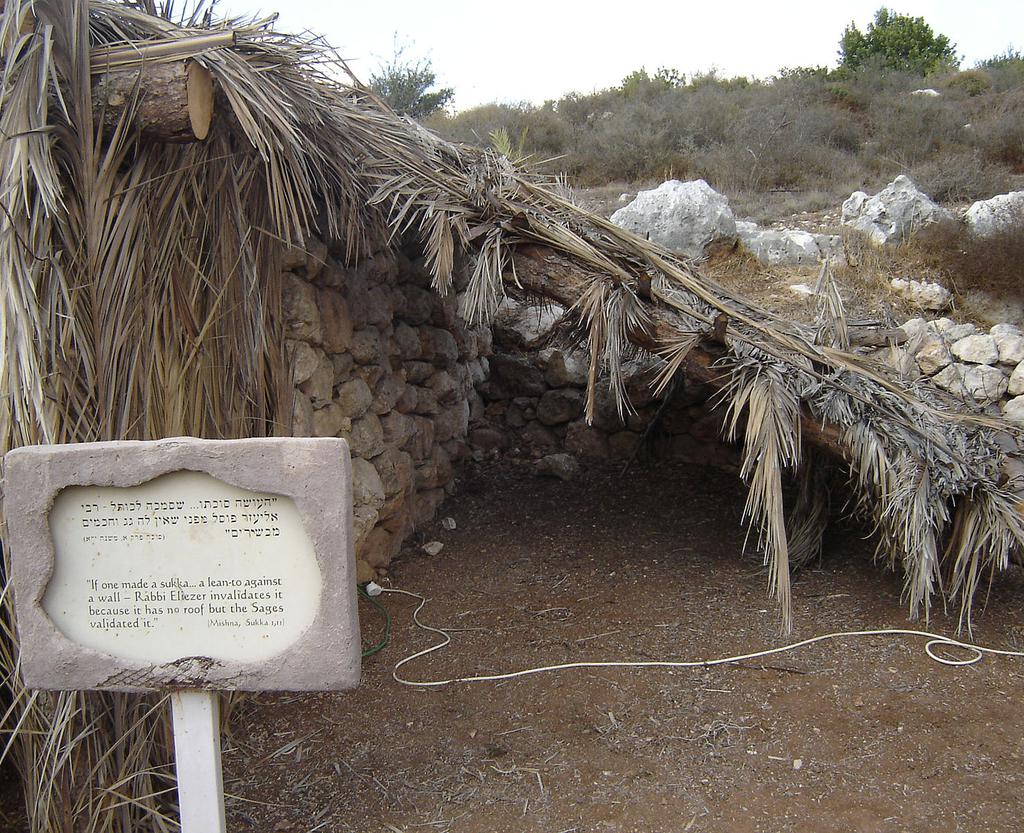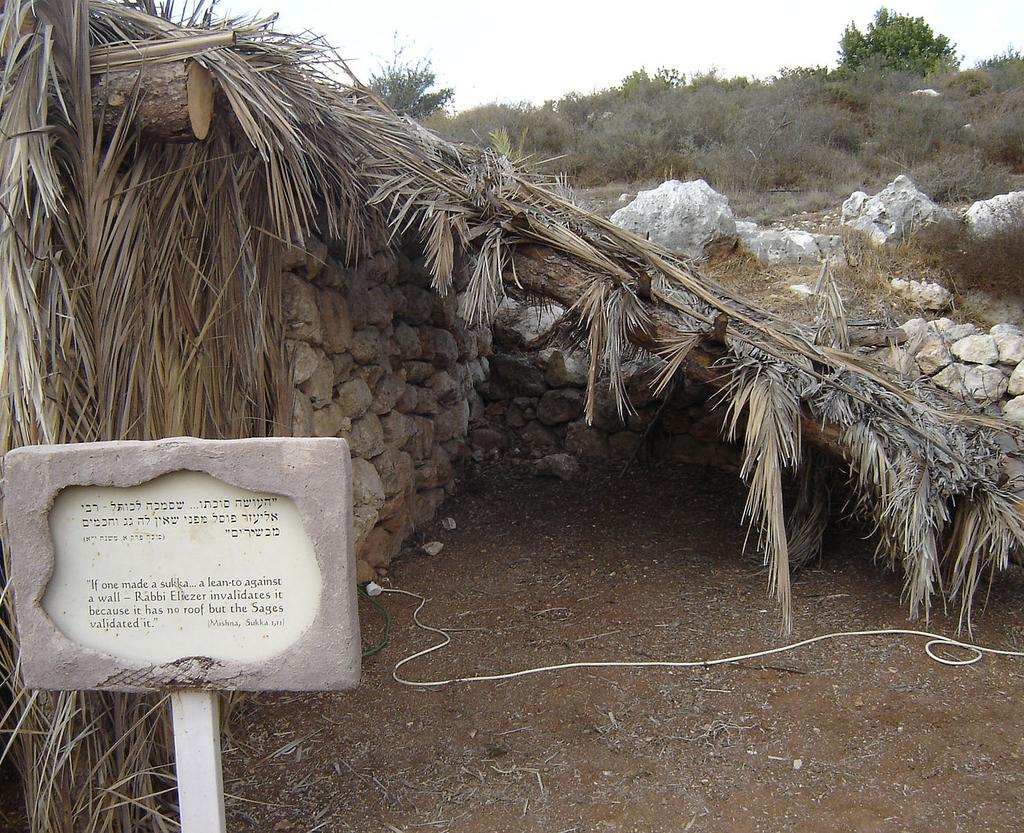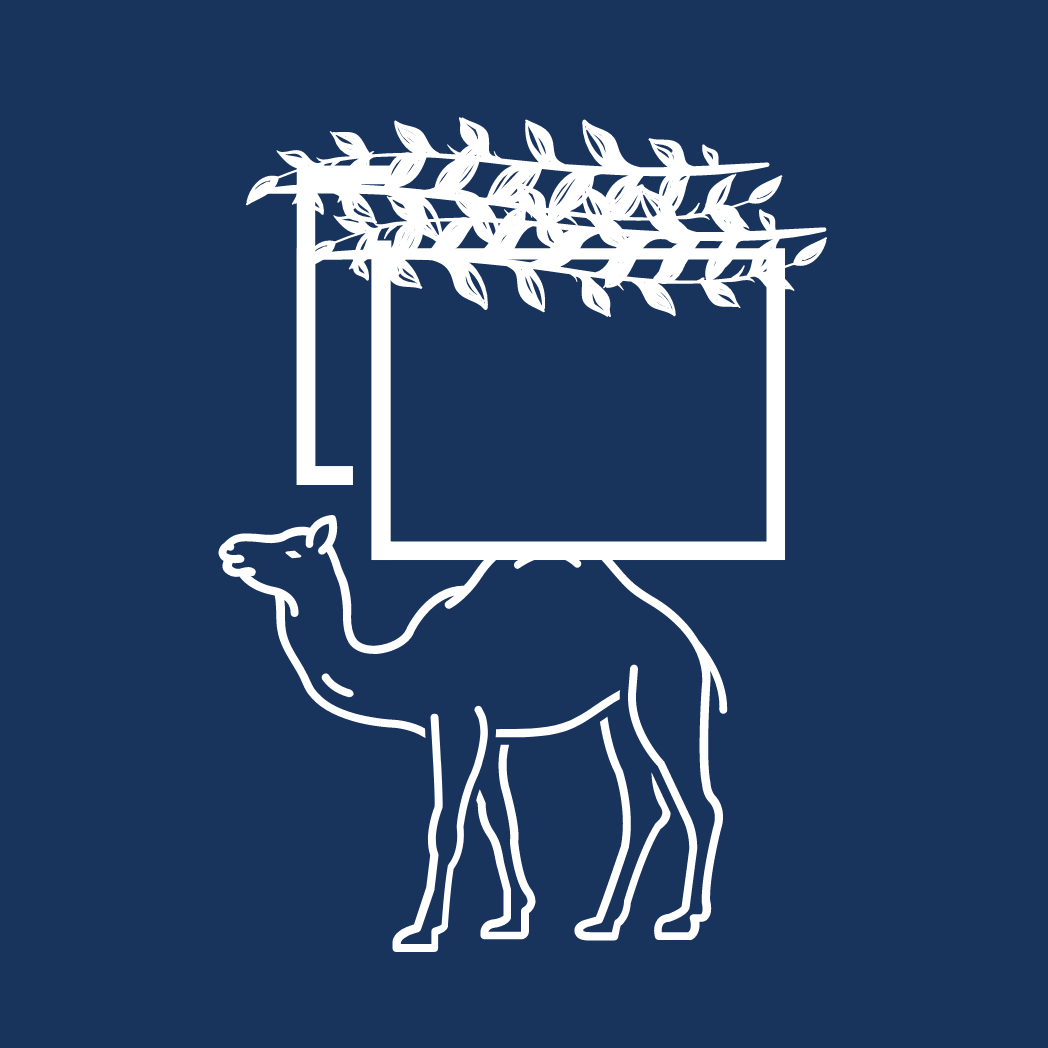
Photo from the Sukkot Exhibit, curtesy of Neot Kedumim Park
תערוכת הסוכות, צילומים באדיבות פארק נאות קדומים
הָעוֹשֶׂה סֻכָּתוֹ כְּמִין צְרִיף, אוֹ שֶׁסְּמָכָהּ לְכֹתֶל, רַבִּי אֱלִיעֶזֶר פּוֹסֵל, מִפְּנֵי שֶׁאֵין לָהּ גָּג, וַחֲכָמִים מַכְשִׁירִין. מַחְצֶלֶת קָנִים גְּדוֹלָה, עֲשָׂאָהּ לִשְׁכִיבָה, מְקַבֶּלֶת טֻמְאָה וְאֵין מְסַכְּכִין בָּהּ. לְסִכּוּךְ, מְסַכְּכִין בָּהּ וְאֵינָהּ מְקַבֶּלֶת טֻמְאָה. רַבִּי אֱלִיעֶזֶר אוֹמֵר, אַחַת קְטַנָּה וְאַחַת גְּדוֹלָה, עֲשָׂאָהּ לִשְׁכִיבָה, מְקַבֶּלֶת טֻמְאָה וְאֵין מְסַכְּכִין בָּהּ. לְסִכּוּךְ, מְסַכְּכִין בָּהּ וְאֵינָהּ מְקַבֶּלֶת טֻמְאָה:
One who establishes his sukka like a type of circular hut, with no roof whose walls slope down from the center or who rested the sukka against the wall, by taking long branches and placing one end on the ground and leaning the other end against the wall to establish a structure with no roof, Rabbi Eliezer deems it unfit because it does not have a roof, and the Rabbis deem it fit; as, in their opinion, the roof and the walls may be a single entity, indistinguishable from each other. In the case of a large mat of reeds, if one initially produced it for the purpose of lying upon it, it is susceptible to ritual impurity like any other vessel, and therefore one may not roof a sukka with it. If one initially produced it for roofing, one may roof a sukka with it, and it is not susceptible to ritual impurity, as its legal status is not that of a vessel. Rabbi Eliezer says that the distinction between mats is based on use, not size. Therefore, with regard to both a small mat and a large mat, if one produced it for the purpose of lying upon it, it is susceptible to ritual impurity and one may not roof a sukka with it. If one produced it for roofing, one may roof a sukka with it, and it is not susceptible to ritual impurity.

Photo from the Sukkot Exhibit, curtesy of Neot Kedumim Park




